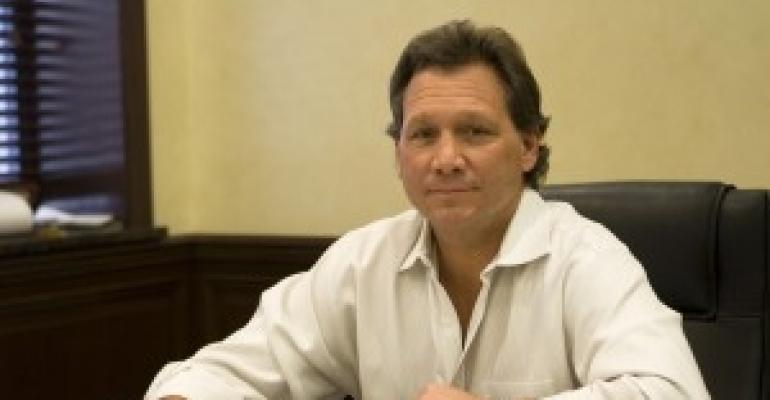 In recent years, an increasing number of commercial and multi-family real estate professionals have jumped on board with green, sustainable construction and operations. Those who harbored initial reservations are realizing that green building and financial viability are not mutually exclusive, especially in the development and construction of affordable housing. This gradual shift is largely due to the successful completion and operation of green projects. The reality is that not only can these projects be financed, but also offer healthy living for tenants and cost savings for owners during operations . Although these are the most notable benefits of green building, many overlook the larger impact on the environment. We hope that whatever remaining doubts linger about building green will be erased by the devastation inflicted by Superstorm Sandy.
In recent years, an increasing number of commercial and multi-family real estate professionals have jumped on board with green, sustainable construction and operations. Those who harbored initial reservations are realizing that green building and financial viability are not mutually exclusive, especially in the development and construction of affordable housing. This gradual shift is largely due to the successful completion and operation of green projects. The reality is that not only can these projects be financed, but also offer healthy living for tenants and cost savings for owners during operations . Although these are the most notable benefits of green building, many overlook the larger impact on the environment. We hope that whatever remaining doubts linger about building green will be erased by the devastation inflicted by Superstorm Sandy.
The financial fundamentals of green construction haven’t changed:
It still costs, approximately $3 to $5 dollars more per square foot to construct green buildings in the affordable and supportive multi-family sector, where we specialize;
For that extra money, you get efficiency, which translates to longevity and operational savings: low VOC paint and wood, efficient mechanicals, roofs and windows, and energy star appliances, for instance.
The upfront costs allow for operational savings to add up over time, compensating the developer for having gone green (i.e. lower operating expenses, higher NOI, which allows for more proceeds upon a refinancing);
Lenders and relevant governmental agencies are beginning to recognize those lower operating costs in pro formas, making more debt available;
Foundations’ grants are increasingly dependent on the level of green in construction; and
Elected officials, anxious to embrace development that is healthier for their constituents, often find discretionary grant money to bolster sustainable development, further narrowing the financial spread between green construction and outdated methods.
Sandy taught us a number of harsh lessons. As developers and builders, we have an obligation to improve the environment, or, at the very least, reduce our impact on it as much as possible. For those of us who develop, build and operate real estate, green and sustainable construction is not only well within our grasp, but also highly desirable.
Discussions of the merits of building green versus generating legitimate profits and returns on investment are unnecessary because the two coexist. Lettire Construction’s portfolio provides significant evidence, and we are merely one green developer and builder from one city:
Dinkins Gardens, an 85-unit affordable housing complex that we built for the developer Jonathan Rose Companies, whose owner is viewed as the pioneer of green affordable housing. Dinkins Gardens was Harlem’s first green affordable housing development and featured south-facing solar shades, a green roof, a rainwater harvesting system, efficient energy systems that use natural daylight to its best advantage and a high-efficiency boiler.
Tapestry, which Lettire Construction constructed and co-developed with Rose. Tapestry was a 185-unit, mixed-income development and the first in East Harlem to receive LEED Gold certification; Urban Land Institute (ULI) selected it from 30 submissions nationwide to receive an award for excellence in workforce housing.
Via Verde, the stunning, award-winning development that combined 222 units of co-ops and rental units, which Lettire Construction built for Jonathan Rose Companies and Phipps Houses, as a model of sustainability, energy efficiency and healthy living. It, too, received the ULI award for excellence in workforce housing.
Most recently, Dumont Green, a 176-unit affordable development that Lettire built in Brooklyn for The Hudson Companies, which received the National Grid Award for Energy Efficiency.
Those buildings are still standing, with minimal to no damage, and, more to the point, so are the developers and builders. Building green didn’t break any of us financially, nor has it damaged our counterparts, in New York and beyond, who also build, develop, and own green properties. What will break us as a city, country and society is a marked increase in the number of so-called Storms of the Century. As Governor Cuomo said shortly after Sandy struck, we are now seeing storms of the century every year or two. Even if you focus solely on the bottom line, in Sandy’s aftermath, it is clearer than ever that is not only environmentally responsible, but also economically responsible, to build and operate real estate in the deepest shade of green we can imagine.
Nicholas Lettire is President of Lettire Construction Corp.
About Lettire Construction Corporation:
Lettire Construction Corporation, headed by brothers Nicholas and Gerard Lettire, is one of the largest, premier builders and developers of green affordable and supportive housing in the region. Headquartered in East Harlem since 1980, the company’s founders are actively participating in the economic rebuilding of the City, and creating local jobs in the communities where the firm is active. By working closely with government agencies, development partners and neighborhood leaders and coalitions, Lettire has been able to further its mission, and dramatically increase the supply of high quality affordable and supportive housing in the New York area.

